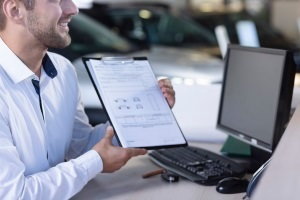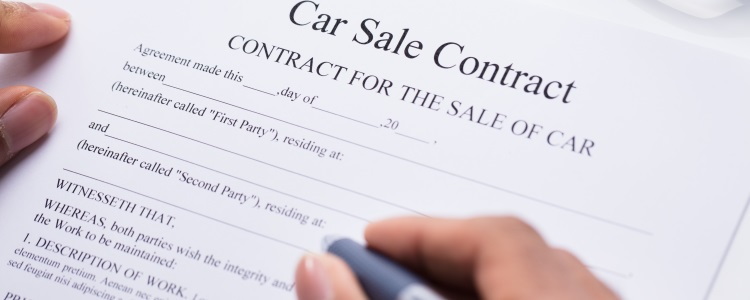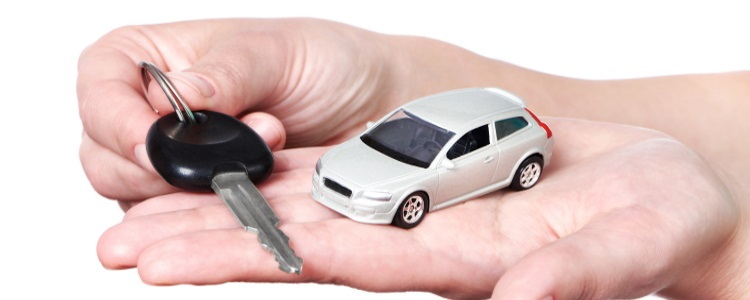If you’re in the market for a used vehicle, whether it’s from a dealer or private party, you need to bring in some paperwork to complete the car buying process. If you’re buying a used vehicle from a dealership, the dealer typically handles all the paperwork. If you buy from a private party, both the seller and you need to head to your local DMV or Secretary of State to transfer ownership.
Paperwork for the Car
 You don’t have to bring in any additional paperwork to buy a used car, but there are two documents the dealership has that complete the process that you should be aware of:
You don’t have to bring in any additional paperwork to buy a used car, but there are two documents the dealership has that complete the process that you should be aware of:
- Title – You can’t transfer ownership of a used vehicle without its title. The title must have the signatures of both the buyer and seller, the mileage, and the date of sale. Depending on the state you live in, you may need an odometer mileage statement, the sales price, and/or notarization.
- Buyer’s order – Make sure the buyer’s order has all information about the car including its year, make, model, VIN number, and sales price.
If you’re in the process of negotiating the price, you can bring in the vehicle history report or inspection report. This is highly recommended, but not required. Bringing in a history report and/or an inspection report for the car can help negotiate the asking price and give you a better idea of what the vehicle has been through.
Paperwork for You
If you’re buying a used car through a subprime lender, you need to bring in additional documents that prove you’re able to pay for the loan. These include:
- Proof of income – A recent computer-generated pay stub with your year-to-date earnings.
- Proof of residency – A recent utility bill in your name at the address listed on the application.
- Proof of a phone – A recent phone bill in your name. These lenders don't accept prepaid phones.
- List of references – Generally, six to eight personal references with names, phone numbers, and addresses.
- Valid driver’s license – Must be valid and have the address that’s listed on the application and sales documents.
- Certificate of insurance – Must be full coverage insurance, with the vehicle’s information (VIN number, year, make, model, etc.).
In addition, you need to come prepared with a down payment. You can’t avoid making a down payment with a bad credit auto loan, but the good news is that the minimum amount required isn’t a whole lot. Typically, subprime lenders require a minimum of $1,000 or 10 percent of the car’s selling price, whichever is less.
How to Transfer a Title and Register a Used Car
You don’t have to worry about transferring the title when you buy a used vehicle from a dealer. With a private sale, you need to sit down with the seller and sign the back of the title before you can register the car. Once the title is signed, you can head to the DMV or Secretary of State to register the vehicle.
You have to pay a fee to register and title a car, buy new license plates, and fill out the paperwork. Make sure you have the title, proof of insurance, and any additional documents required by your state to complete the registration process. In addition, be sure the lender is listed as a secured party on the title.
The Bottom Line
You need to have all your documents ready and properly filled out and signed before you can take ownership of a vehicle. It can take some time to complete the process, but it’s worth it in the end. If you’re just dipping your toes in the used car buying world, have little to no credit, and need some help getting started, Auto Credit Express is to assist.
We are teamed up with dealerships all across the country that are experts at helping buyers dealing with credit issues get financed, and we want to connect you with one near you. Our auto loan request form is easy, quick, and free. What’re you waiting for? Get started right now!
















